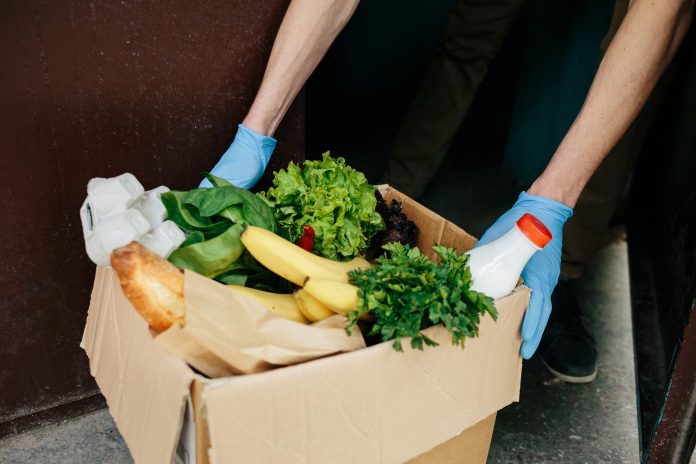Ruth Richardson, Executive Director, The Global Alliance for the Future of Food, shares her perspective on the future of food in light of the COVID-19 pandemic
The COVID-19 pandemic has highlighted the damage that can be wreaked by biodiversity and habitat loss across the world, risking public health at every level and in every country. As humans continue to encroach into formerly wild spaces, driven mainly by industrialised agricultural land use, the crossover between pathogens from animals to humans will only increase the incidence of devastating zoonotic diseases.
The recent IPBES report on Biodiversity and Pandemics argues that the way to significantly lower the risk of future pandemics is to work towards reducing the human activities that drive this biodiversity loss. This can be done through increased conservation of protected areas and by creating and implementing measures that halt the unsustainable exploitation of high biodiversity regions. Crucially, changes in the way we use land, in particular, the expansion and intensification of agriculture, mean that food systems are central to this agenda. World leaders simply must confront the links between industrialised agriculture, habitat loss, and risks to public health.
Policy priorities for food systems
For policymakers and their advisors, there is an unprecedented opportunity to show real leadership and tackle these challenges head-on: tying food systems transformation to COVID-19 response and stimulus measures. Going hand-in-hand with this is that policymakers must stop making decisions based on incomplete and, effectively, bad data.
For systems whose impacts are so broad and profound, standard ‘yield-per-hectare’ productivity measures are a poor and narrow measure for developing policies and making decisions about food systems. By design, negative externalities — habitat destruction, soil erosion, water contamination, displacement of Indigenous Peoples, diabetes, and more — are not captured by narrow approaches to quantifying the impact and, therefore, go unaccounted for on business balance sheets. This results in high costs for governments who, inevitably, need to pick up the bill for poor health and environmental degradation.
A 2015 study, The Hidden Cost of UK Food, shows distortion in the food system, reporting that for every £1 spent by consumers on food, there is an additional cost incurred of 97p. The costs range from biodiversity loss to diet-related disease, work-place injuries and environmental contamination, among other factors. These hidden costs are not passed along to the consumer or producer but are paid by society. In total, this UK study reports that the cost of biodiversity and ecosystem service loss in 2015 alone was at least £7.8 billion, and likely much more.
Conversely, the continued reliance on outdated approaches to measuring food systems impacts also means that positive impacts — carbon sequestration, insect pollination, resilience to natural disasters, and vibrant communities — are also lost from view and not adequately invested in or considered in policy- and decision-making. This raises an important reminder that without being able to see the full picture of how food systems impact people and the planet, policy-makers and those in control of financial flows are simply flying blind in their efforts to deliver on the SDGs, climate and biodiversity targets.
The future of food
Changing the tools used to assess and measure “what matters” in food systems is an immediate way to take actions that promote human, animal and planetary health. Indeed, replacing these metrics is critical to developing a holistic systems approach that will equip all critical actors with the ability to achieve policy and practise objectives through a wide range of options. Deploying ‘true cost accounting’ tools, such as the TEE- BAgriFood Evaluation Framework is the crucial first step in achieving this. A step-by-step guide to assess how food systems impact people, society, the environment, and natural resources, this overarching implementation guide can be used at various scales, in different sectors and locations, to comprehensively analyse and transparently evaluate food systems, and then make better, smarter decisions about the future.
Ultimately, we face interlinked human, animal, and planetary health crises. We need to go beyond “build back better” and commit to truly thinking and acting in a radically different way and with urgency. There are innovative, holistic tools ready and available for all, from the smallest family farm to the largest government, that facilitate better decision-making about the future of food. By championing these tools at the forefront of change, those within the policy space can show true leadership on food systems transformation just when we need it most.
Sustainable food systems in Europe – comment from the Editor
Europe’s Green Deal is a chance to better the health and well-being of citizens and protect our planet. The European Commission wants Europe to become the first climate-neutral continent in the world by 2050, based on green economic growth, as well as a fair and equal society, but this “cannot be achieved without shifting our food systems onto a sustainable path,” according to the European Commissioner for Health and Food Safety, Stella Kyriakides.
As part of a webinar on “Bringing Farmers to the Table: Agriculture, Climate, Economy and Equity”, Commissioner Kyriakides remarks that COVID-19 has forced a rethink of Europe’ ‘status quo’ and adapting to a different reality. She developed this point further, including comment on the importance of sustainable food systems.
“It has reinforced the importance of sustainable food systems, from production and processing, through to supply and use. And it has highlighted the strong links that exist between our health and our ecosystems. Resilient food systems are vital for food security, and equitable society and economy.”
The Farm to Fork Strategy, adopted by the European Union is an aspect of the European Green Deal and charts ambition towards “concrete targets to transform the EU food system by 2030,” Commissioner Kyriakides explains. “The Farm to Fork Strategy will reduce the environmental and climate footprint of the EU food system and create a food environment that makes the healthy and sustainable choice the easy choice for consumers,” the Commissioner adds.
To find out more about sustainable food systems in Europe, please click here.











